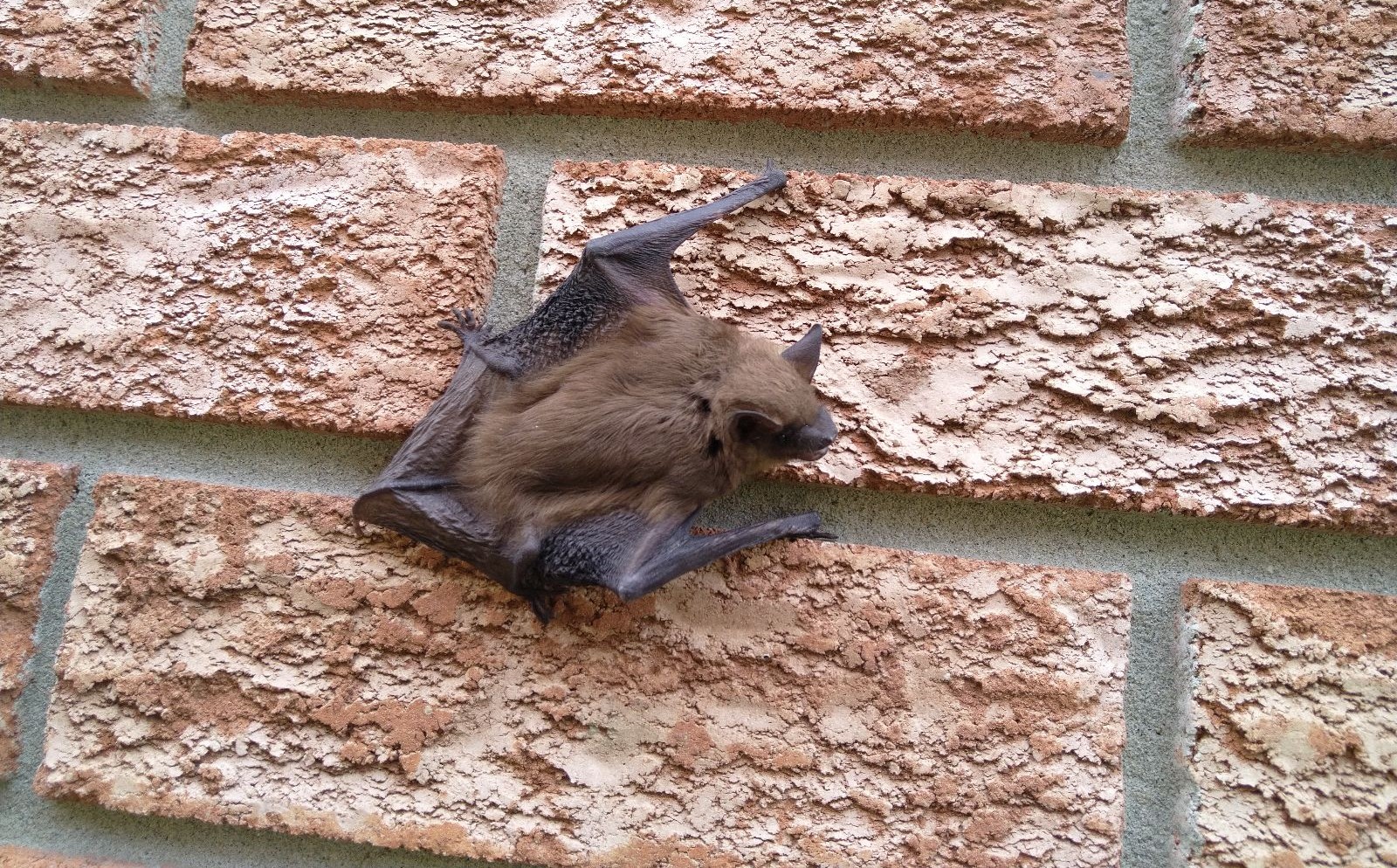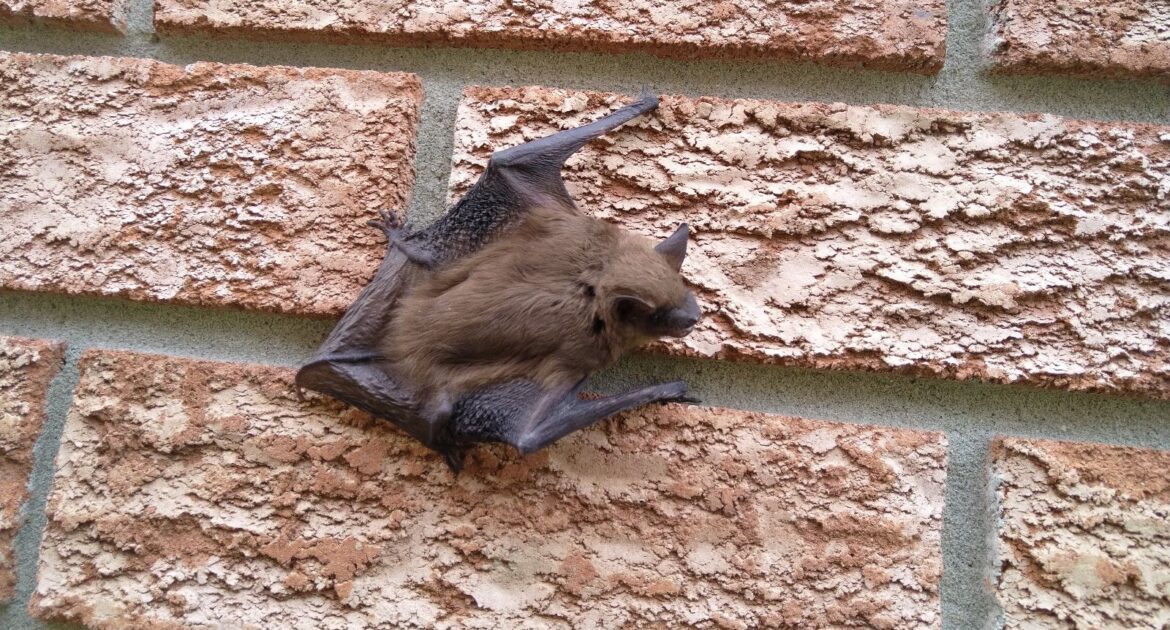You wake up in the middle of the night to strange scratching sounds coming from above your bedroom. Your heart pounds as you listen to the soft scurrying and squeaking that seems to move across your ceiling. What could be making those eerie noises in your attic at night?
You might think it’s mice or squirrels, but there’s another possibility you may not have considered. Those mysterious sounds could be one of the most common bats in your attic signs. Many homeowners in Oshawa discover they’re sharing their homes with these nocturnal creatures without even knowing it.
While raccoons can indeed harm your pets through bites, scratches, or disease transmission, today we’re focusing on a different wildlife concern. Professional bat removal services have become increasingly important as more families realize these winged animals have taken up residence in their homes. At Skedaddle Humane Wildlife Control in Oshawa, we help families identify and safely address these situations through expert wildlife control methods.
Throughout this guide, we’ll explore what those strange attic sounds might mean, help you spot the telltale bats in your attic signs, and explain when it’s time to call professionals for help.
What’s That Noise?
You’re lying in bed when you hear it again – that soft scratching sound overhead. It’s not the heavy thumping of a raccoon or the rapid scampering of squirrels. Instead, it’s something different. Something quieter but just as unsettling.
These flying mammals are most active during dawn and dusk. This means you’ll often hear noises in your attic at night when they’re preparing to leave for their nightly hunt for insects. You might also catch these sounds in the early morning hours when they return to roost.
The sounds they make are quite distinct from other attic invaders:
- Soft scratching as they crawl along wooden beams
- High-pitched chirping or squeaking, especially when there are babies present
- Fluttering sounds when they move around or try to find better roosting spots
- Gentle tapping against walls or insulation as they navigate in tight spaces
Unlike mice that scurry quickly, these creatures move more slowly and deliberately. They’re actually quite clumsy when crawling around, which creates those distinctive scratching sounds you hear. Since they hang upside down when resting, you’re more likely to hear them inside walls than directly overhead in your ceiling.
The timing of these sounds is crucial. If you hear activity during the day, it’s probably squirrels or birds. But if those mysterious noises happen around sunset or sunrise, there’s a good chance you’re dealing with our nocturnal friends.
Signs of Bats in Your Attic
Spotting bats in your attic signs requires knowing what to look for beyond just the sounds. These creatures leave behind several telltale clues that trained professionals can easily identify.
Droppings Are the Biggest Clue
One of the most obvious bats in your attic signs is their droppings, called guano. These look like small, dark pellets similar to mouse droppings but with one key difference – they crumble to dust when you touch them. This happens because they’re made mostly of crushed insect parts.
You’ll typically find these droppings:
- Around entry points like vents or small openings
- On window sills and porches
- Scattered across your attic insulation
- Near walls where they roost
Oily Stains Mark Entry Points
These animals have oily fur that helps them squeeze through tiny openings. Over time, this oil leaves dark, greasy stains around their entry points. Look for brownish streaks around:
- Roof edges and soffits
- Vent openings
- Gaps between siding and brick
- Areas where different building materials meet
You See Them Coming and Going
Another clear sign is actually seeing these creatures flying around your home at dusk. They often circle the same area repeatedly as they leave their roost. If you notice them consistently flying near a particular part of your roof, that’s likely where they’re getting inside.
Strong Odours in Your Attic
Large colonies create a strong, ammonia-like smell from their droppings and urine. This odour gets worse over time and can sometimes be detected in living areas below the attic. The smell is particularly noticeable in hot weather when it intensifies.
Stains on Ceilings
In severe cases where colonies have been present for months or years, you might notice stains appearing on your ceiling. This happens when moisture and waste materials seep through insulation and drywall.
Different Types Make Different Sounds
Not all species sound the same. In the Oshawa area, you might encounter different types, each with their own habits:
- Little Brown Species are the most common in Ontario homes. They make soft chittering sounds and gentle scratching as they move around. Their colonies can include dozens of individuals, creating quite a chorus of noise.
- Big Brown Species are larger and slightly louder. You’ll hear more pronounced scratching and occasional thumping sounds as they move through tight spaces.
- Evening Species are less common in attics but do sometimes roost in buildings. They tend to be quieter than their cousins.
The time of year also affects the sounds you hear. During summer months when babies are present, you’ll hear more chirping and squeaking. In spring and fall, adult animals are more active as they prepare for seasonal changes.
Why You Shouldn’t Wait
Ignoring those mysterious attic sounds isn’t just about avoiding sleepless nights. There are serious reasons why addressing this situation quickly is important for your family’s health and your home’s structure.
Health Risks Are Real
These flying mammals can carry diseases that affect humans. While most are healthy, some may carry rabies or other illnesses. Their droppings can contain a fungus called histoplasma, which causes respiratory problems when people breathe in the spores.
Children and elderly family members are especially vulnerable to these health risks. The longer these animals stay in your attic, the more waste accumulates, increasing the potential for health problems.
Property Damage Adds Up
What starts as a small problem can quickly become expensive. These creatures don’t just live quietly in your attic – they can cause real damage:
- Their waste corrodes wood and metal structures
- Urine stains ceilings and walls
- Large colonies can damage insulation
- Entry points they create or enlarge let in moisture and other pests
The Problem Gets Worse
These animals are creatures of habit. Once they find a good roosting spot, they return year after year. A small colony of five or six can grow into dozens over time. What seems like a minor issue now could become a major infestation if left untreated.
Legal Considerations
In Ontario, many species are protected by law. This means there are specific times of year when they can be removed and particular methods that must be used. Waiting too long might mean you’ll have to live with the problem for months until removal is legally permitted again.
When Other Animals Might Be the Culprit
Sometimes those strange attic noises aren’t from flying mammals at all. Here’s how to tell the difference:
- Mice make sustained scratching sounds, usually late at night. They’re more active than our winged friends, and you’ll hear them scurrying quickly from place to place.
- Squirrels are active during the day and make much louder noises. You’ll hear heavy footsteps, nuts rolling around, and loud scratching as they chew on wood.
- Birds create chirping sounds during the day and might get trapped, causing frantic flapping sounds.
- Raccoons make the loudest noises – heavy thumping, chattering, and sounds like someone walking around in your attic.
The timing and type of sound usually give away what kind of animal you’re dealing with. Professional wildlife experts can quickly identify the source based on these clues.
Say Goodbye to Restless Nights
Those mysterious noises in your attic at night don’t have to keep you awake anymore. Recognizing bats in your attic signs early means you can address the problem before it becomes a bigger issue. From the soft scratching sounds at dusk to the telltale droppings and oily stains around entry points, these signs point to a problem that requires professional attention.
Don’t let these nocturnal visitors continue disturbing your peace and potentially threatening your family’s health. Professional bat removal services ensure the problem is solved safely and permanently, using methods that respect both your needs and wildlife protection laws.
At Skedaddle Humane Wildlife Control in Oshawa, we understand that dealing with bats in your attic signs can be stressful. Our experienced team handles everything from initial assessment to final cleanup, giving you peace of mind and a good night’s sleep.
Ready to reclaim your quiet home? Contact us today to request an estimate and learn more about our proven solutions for noises in your attic at night.




